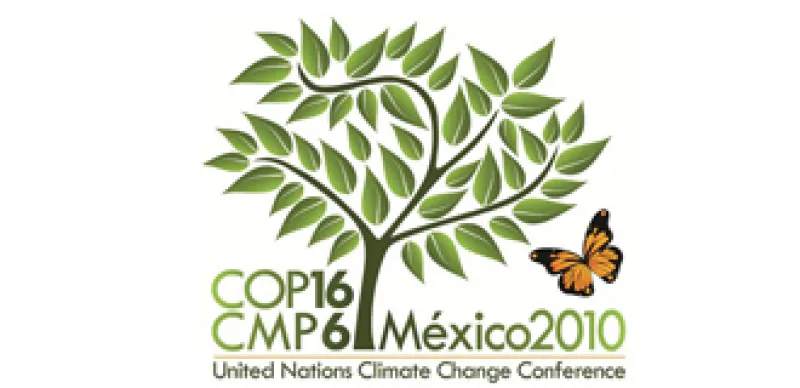The dearth of U.S. institutional investors at the UN's Cancun climate change talks that ended on Dec. 10 was a telling sign that expectations were low: There wasn't much hope for a major treaty that would dramatically shift the risk/reward equation for climate-related investing.
While their European counterparts visibly advocated for a strong carbon-reducing accord in Cancun, U.S. investors largely stayed at home, where lackluster returns and long-term pension obligations are viewed as bigger, more immediate concerns than climate change.
For the most part, they made the right call: Round-the-clock negotiations, involving nearly 200 countries, failed to produce a legally binding agreement for reducing global greenhouse gas emissions.
That means there will continue to be only limited opportunities for low-carbon green investing worldwide.
"I can't do anything unless it serves the best interests of my membership," says Ole Beier Sorensen, chief of strategy and research at the $90 billion Dutch pension fund ATP, bemoaning the lack of an international climate accord during a Cancun panel discussion. "We need clear and sustained long-term policy commitments."
"Climate change poses serious financial risks that are not going away and will only increase the longer we delay enacting sensible policies to transition to a low-carbon economy," added CalSTRS CEO Jack Ehnes, one of more than 250 global investors who signed an investor statement last month calling for a strong climate deal. Ehnes didn't go to Cancun.
The dilemma for both of these investors is that they can't move more than a small fraction of their portfolios into low-carbon investments while the global policy environment is heavily tilted toward fossil fuels and high-polluting technologies.
Globally, clean energy investments in 2010 will total some $200 billion, up slightly from 2009, but less than half of the $500 billion a year that economists and climate scientists say is needed in the coming decades to meaningfully limit global temperature increases.
Still, there were some positive signs from Cancun.
One of the strongest is that emerging-market governments are moving decisively to spur green energy growth in their own countries - a trend being noticed by investment banks.
For the first time ever, wind energy installations in developing countries this year - more than 22,000 megawatts - will outpace those in industralized countries. China's a big reason why, but India, Brazil, Mexico and others are also moving aggressively on wind, solar and other clean energy fronts.
This surge is a direct result of these countries putting strong clean energy policies in place. Among those:
* South Korea is dedicating the majority of its fiscal stimulus to environmentally friendly infrastructure and industry initiatives.
* India has introduced a new tax on coal consumption, with the revenues expected to be used for a green investment bank.
* China's seven prioritized industries all have strong links to low-carbon models, and it expects soon to launch a pilot carbon trading program.
"If policy ambition has stalled in the industrialized world, it has if anything accelerated this year in key emerging markets," wrote HSBC Global Research, which is especially bullish about climate-related equity investing in Asia and Latin America. "This defies the traditional 20th century worldview whereby developing countries always follow in the wake of the developed."
So where are the U.S. and Europe in all of this? Lagging the pack.
Uncertainty and, in many cases, genuine backsliding on clean energy policies are ravaging wind and other renewable energy investing in the U.S. and Europe. Energy efficiency and energy demand management are about the only clean energy sectors with bright prospects in the U.S. in 2011, HSBC predicted this week.
So are there any glimmers of hope for investors from Cancun?
Yes. While no mega-treaty deal was struck, negotiators did formalize commitments made in Copenhagen last year on the need for deep greenhouse gas reductions to limit average global temperature increases to below 2 degrees - a huge challenge, to be sure, for which commitments to date are woefully inadequate.
Negotiators also achieved partial agreements on key 'building-block' issues such as finance, technology transfer and adaptation financing. Specifically, they:
* Created a Green Climate Fund that will serve as a key channel for attracting financing for climate adapation, especially in developing countries;
* Established a Technology Mechanism to identify key clean technology priorities and coordinate technology transfers between all countries;
* Created a new transparency standard for all major countries, including the U.S. and China, to report emissions data and pollution reduction actions.
Still, the agreements were more baby steps than giant ones.
Perhaps the biggest problem is the continuing lack of trust and shared understanding between investors, who have a hugely important role in financing much-needed climate mitigation, and government policymakers who handle the actual negotiations.
As we saw in Copenhagen, investors in Cancun spent much too much time talking among themselves, NGOs and corporate leaders rather than with real dealmakers - the negotiators. Until this gap is narrowed, private investment will remain more a fringe player than a paradigm-changer on this colossal climate issue.
Clearly, there is an urgent need for far stronger dialogue between policy makers, business and investors in the coming months, in advance of the next round of climate negotiations in 2011 in South Africa. At the Investor Network on Climate Risk, we look forward to helping lead the way.
Mindy Lubber is president of Ceres and director of the Investor Network on Climate Risk, a North American-based network of 98 institutional investors with collective assets totaling $9 trillion. For more information, visit http://www.ceres.org






